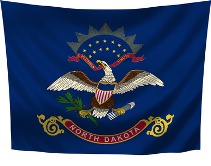 As with most states in the nation, in order for a resident of ND to register and operate a motor vehicle they must first obtain a car insurance policy. Being caught operating without meeting this requirement is considered a class B misdemeanor, and if the offending motorist is convicted they will receive a mandatory fine of no less than $150. In addition, motorists involved in an uninsured accident will be assessed 14 points to their driver’s license, which will result in the suspension of driving privileges.
As with most states in the nation, in order for a resident of ND to register and operate a motor vehicle they must first obtain a car insurance policy. Being caught operating without meeting this requirement is considered a class B misdemeanor, and if the offending motorist is convicted they will receive a mandatory fine of no less than $150. In addition, motorists involved in an uninsured accident will be assessed 14 points to their driver’s license, which will result in the suspension of driving privileges.
In order to comply with the North Dakota auto insurance requirements motorists must purchase an extensive amount of coverage when compared to other states. But fortunately for resident’s, the state ranks among the lowest in country for coverage costs. The first of the types of coverages required by ND laws is bodily injury liability. This will cover injuries sustained by a third party up to the limits stated on the policy. The minimum amount that must be purchased is $25,000 for one person injured in an accident and $50,000 for all persons injured per accident. Motorists will also need to purchase property damage liability to cover the cost of damaging another party’s property, which could include a vehicle, fence, pole or stop sign. The minimum amount that can be carried is $25,000. Both the limits of bodily injury and property damage liability can be increased by paying more in premiums.
Motorists in the state are also required to carry uninsured motorist (UM) coverage in amounts of no less than $25,000 per person and $50,000 per accident. This covers injuries that are sustained by a drivers and passengers resulting from being struck by a driver who lack an insurance policy. In addition to UM, motorists must carry underinsured motorist (UIM) coverage. This insures against injuries sustained by the policyholder and passengers if struck by a motorist whose liability limits are lower than the insured’s UIM. The limits of this protection must equal those of UM.
Lastly, all motorists must carry basic no-fault coverage, which is also known as Personal Injury Protection (PIP) with a limit of $30,000. This will provide coverage for economic losses such as medical expenses and work loss as a result of a traffic accident regardless of who was at-fault. Residents should be aware that none of the required protection will provide the policyholder with compensation for any damages that their vehicle sustains following a collision. According to the North Dakota Consumer’s Guide to Auto Insurance, in order to protect against such expenses a motorist would need to add collision coverage to their policy. This protection is usually coupled with comprehensive coverage but can be purchased separately.
Source: http://www.onlineautoinsurance.com/north-dakota/